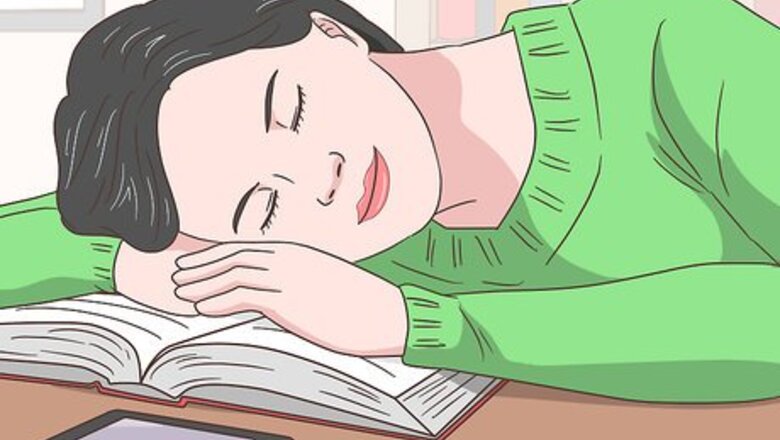
views
Getting a Quick Burst of Energy
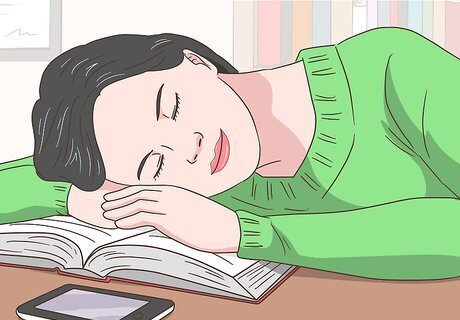
Take a nap. It is perfectly normal to feel sleepy during your period, as cramps, nausea, or feelings of depression or anxiety can disrupt your sleep cycle. If you feel like you need some extra sleep, go ahead and take a power nap. Avoid taking naps in the late afternoon, as this may prevent you from falling asleep at bedtime. 20 minutes is the ideal length for a nap if you want to wake up feeling energized. If you nap much longer than this, you risk feeling even groggier when you wake up. Never take naps during the day if you suffer from insomnia. This will further disrupt your sleep pattern and make it harder for you to fall asleep at night.
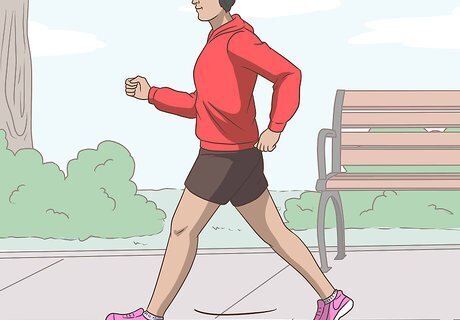
Go for a walk. Sometimes what you need to regain your energy is a little movement. Try getting your heartbeat up for a few minutes by going for a brisk walk. Even though it may feel like a chore, you will feel much better at the end of your walk. Try to incorporate a walk into your daily schedule if you want to prevent feelings of lethargy before they happen. Any light to moderate exercise will help, but walking tends to be the easiest one to do spontaneously. Try walking or running up and down the stairs. Stretch breaks are often socially appropriate and even a few moments can help. Your body may benefit from some extra fuel if you are feeling especially sluggish. Try a light, healthy snack to help give yourself some energy. This will be especially helpful if you have not been eating nutritious foods throughout the day. Try giving yourself a protein boost with some nuts, nut butter, or low-fat cheese. Fruit is also a healthy choice that can give you the burst of energy you need. Eating healthy meals throughout the day will help prevent you from feeling de-energized to start with. Try to choose foods that are high in protein and fiber, but low in sugar, salt, and fat.
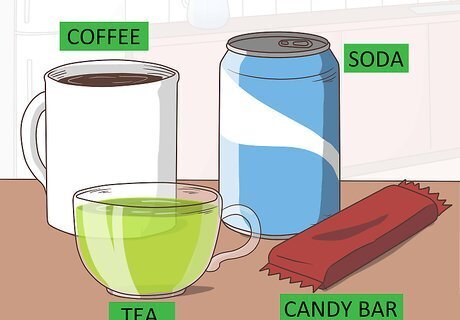
Consider sugar or caffeine. Sometimes a tea, coffee, soda, or candy bar will give you the energy short-term that you need. This will give you a burst of energy, but it will not last long and you may feel even worse when it wears off. This should be used sparingly, as healthy foods will give you longer-lasting energy and make you feel much better in the long run. Caffeine may worsens menstrual symptoms for some people, so be cautious. If you find that you have worse cramps or other symptoms when you drink caffeine, steer clear during and right before your period. Caffeine can be taken as a supplement as well (either in pill or powder form). No matter what form you take it in, you should not exceed the recommended dose of 150 – 600 mg.
Maintaining a Healthy Lifestyle
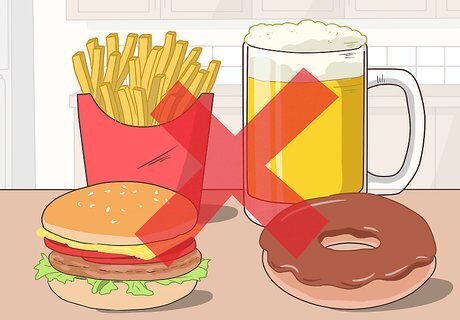
Skip the junk food. You should try to stick to a healthy, nutritious diet all the time, but this can be especially hard when you're feeling sluggish and unmotivated. Not only is junk food bad for your overall health, but it can also worsen many symptoms that are typically associated with menstruation and PMS, including bloating, depression, and fatigue. Avoid excessive amounts of sugar, salt, fat, caffeine, and alcohol. These foods will not provide you with long-lasting energy, and they may cause you to feel even more tired. Eat plenty of fruits, vegetables, and whole grains. These will give you the long-lasting energy your body needs.
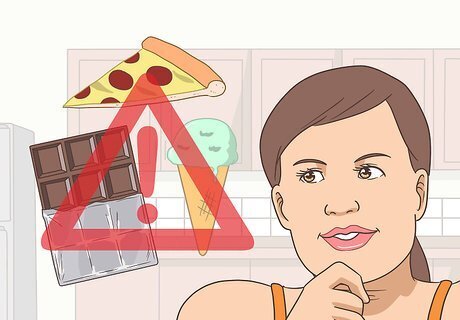
Watch out for cravings. Some people crave foods that are high in sugar and fat during their periods, even when they don't normally eat these foods. These can cause highs and lows in your energy level, even on a good day, so it's no wonder you're feeling lethargic if you have been giving into these cravings. Try to be mindful of them and avoid eating things that you normally wouldn't. Substitute healthy options for cravings. You may want some really unhealthy food, but you may be satisfied with a healthier alternative. For example: Instead of a milkshake, try a strawberry yogurt smoothie. Instead of apple pie, try a baked apple with cinnamon. Instead of regular pizza, try a pita topped with a small amount of cheese and olive oil. Instead of a bacon cheeseburger, try a veggie burger. Try a frozen banana instead of ice cream. Coat it in the crumbs of a crushed chocolate wafer if you want some chocolate. Want a chocolate bar? Try a nice hot cup of cocoa. It has far less calories and fat, and may satisfy your need for a chocolate fix. Sometimes cravings are your body's way of telling you that it needs a specific nutrient. If you find that you are consistently craving a specific kind of food, you may want to see your doctor for a blood test. For example, soda cravings may indicate a calcium deficiency, red meat cravings may indicate an iron deficiency, and chocolate cravings may indicate a magnesium deficiency.

Supplement your diet. While the best way to get the nutrients you need is to eat a healthy, balanced diet, this is not always enough. If you feel your diet is lacking in certain nutrients, it may help to take vitamin supplements. The following vitamins may help improve the symptoms that you experience before and during your period: Folic acid (400 micrograms) Calcium with vitamin D (1000-1300 mg, depending on age) Magnesium (400 mg) Vitamin B-6 (50 to 100 mg) Vitamin E (400 IU)
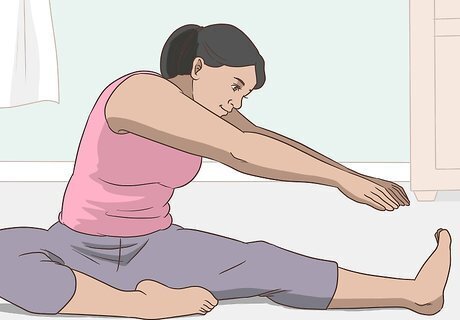
Stick to your exercise regimen. Exercise may sound absolutely terrible when you are dealing with menstrual fatigue, but it will help you regain some of your energy. Although your body may feel lethargic, you likely have every capacity to work out and doing so may make you feel better. It may also help with other period-related symptoms such as cramping, bloating, and indigestion. Try the 10-minute rule. Do your workout for 10 minutes, and then decide if you are up for the workout. Very often once you get going, you will keep at it. If after 10 minutes you still feel terrible, that may be a signal to slow down or stop. Feel free to switch up exercise according to comfort. For example, if your chest is tender from retaining water, maybe your jump rope workout would really be uncomfortable. In such cases, trying an alternate workout may make sense. If exercise is not fun because you are in pain, you will not exercise. Each week, aim for two and a half hours of moderate-intensity aerobic exercise (like brisk walking) or one hour and 15 minutes of vigorous-intensity aerobic exercise (like running). You can also achieve your goal with a combination of moderate and vigorous activities. Incorporate some strength training. You can try lifting weights or doing push-ups. Take an over-the-counter pain reliever like ibuprofen or naproxen if you are suffering from cramps, or try using a heating pad or stick-on heating strip. You may find that you have a lot more energy to move around once your cramps are gone.
Dealing With Sleep Issues
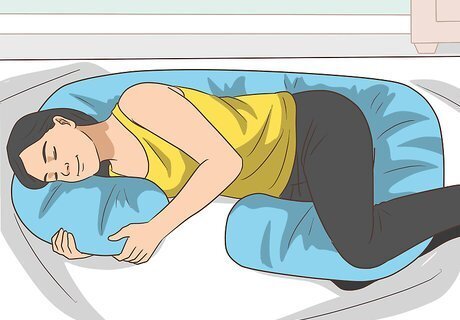
Fight pain. If you are having trouble sleeping at night because you are experiencing painful cramps, try changing your sleeping position or using a body pillow to support yourself. The right position can make all the difference when it comes to falling and staying asleep. If these changes aren't enough, take an over-the-counter pain medication. There's no point in suffering through a poor night's sleep just because you have some cramps. A heating pad may also be beneficial if you have painful cramps. Try sleeping with one on low heat. A warm bath before bed may provide the same benefit.
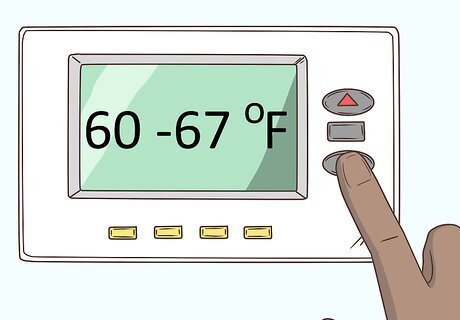
Combat body temperature changes. Your body temperature rises during the second half of your monthly cycle, which may make it harder for you to fall asleep. Try turning the thermostat down a few degrees to counter this effect and make yourself more comfortable. The ideal sleeping temperature for most people is between 60 and 67 °F (15.6 and 19.4°C). If you have a programmable thermostat, set it to automatically adjust to your ideal sleeping temperature right before bedtime. You can also try taking a warm bath before bed. The contrast between the warm water and the cool room will help your body temperature drop faster.
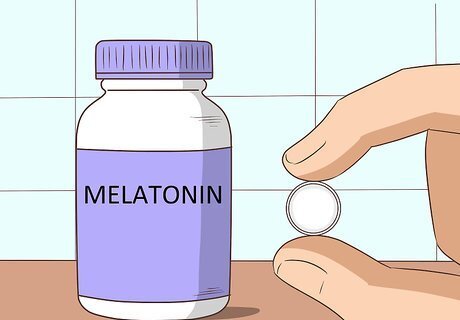
Try melatonin. If you find that you have a much harder time falling asleep during your period than you normally do, it may be that your body is not producing enough melatonin due to hormonal fluctuations. Try taking melatonin, which is available over-the-counter, before bed during your period. Talk to your doctor before you start taking any new supplements. They may interact with other medications you are taking. If you want to confirm that your body is lacking melatonin, you can ask your doctor to test for it. Make sure you get tested during your period for accurate results.
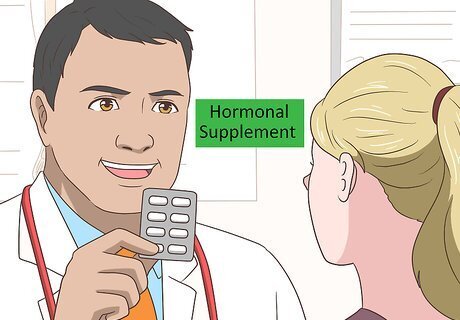
See your doctor about hormone deficiencies. An excess of estrogen or deficiency of progesterone may also be causing your sleep troubles. If this is the case, your doctor may be able to prescribe a hormonal supplement that will help even your levels out. In order to determine if you have a hormonal imbalance, you will need to have your levels tested at several different times throughout the month. This can be done with blood or saliva tests It helps if you track your sleep problems and any other symptoms you may experience before seeing your doctor. This will help your doctor understand whether or not your symptoms are related to your menstrual cycle.
Handling Iron Deficiency
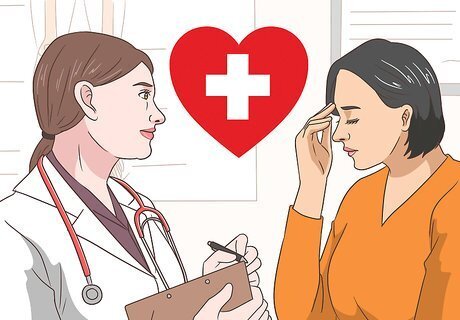
See your doctor. If fatigue during your period is interfering with your ability to work and to enjoy your personal life, see your doctor. You may be suffering from iron deficiency anemia. Iron deficiency anemia can happen to anyone, but women who experience heavy periods are at a higher risk due to their increased blood loss. In order to diagnose anemia, your doctor will want to do a simple blood test. You may also need to undergo additional tests, such as an ultrasound to check for uterine fibroids that could be causing excessive menstrual bleeding. There may be other medical causes for your fatigue as well, although anemia is the most common cause for fatigue that occurs during menstruation.
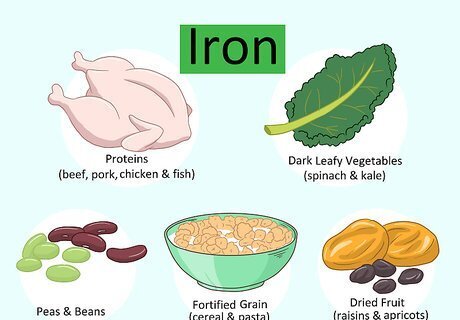
Get more iron from food. For some people, it may be possible to correct iron deficiency anemia simply by making changes to their diets. Your doctor may advise that you eat more iron-rich foods, including: Proteins such as beef, pork, chicken, and fish Dark green leafy vegetables like spinach and kale Peas and beans Fortified grain products like cereal and pasta Dried fruit like raisins and apricots
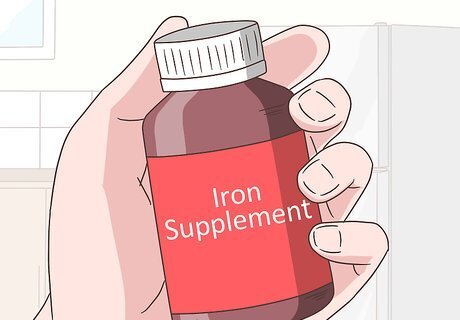
Consider supplements. If you are not able to increase your iron levels with dietary changes, your doctor may recommend that you take an iron supplement, which are available over-the-counter. In extreme cases, your doctor may recommend an IV supplement. Your doctor may also recommend that you take Vitamin C, which aids the absorption of iron. This is available in an over-the-counter pill form as well. You should take this with an acidic juice high in vitamin C such as orange juice, grapefruit juice, or lemonade. These help increase iron absorption. Always take the recommended dose of supplements. Don't stop taking them or change your dose without talking to your doctor.
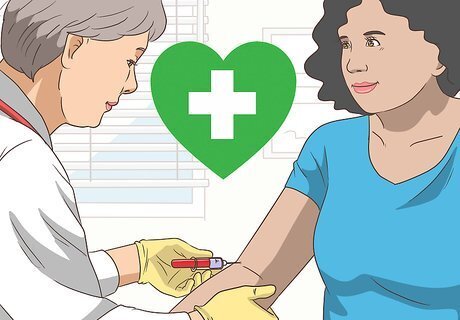
Follow up with your doctor. It's a good idea to follow up with your doctor, and perhaps get another blood test, after you have changed your diet or started taking supplements. This will help you understand how effective your treatment has been and what further changes you need to make. It may take months to get your iron levels back to normal. The good news is that if supplementation is working for you, you should start to feel a difference in your energy levels after about a week. For some people, iron deficiency anemia is caused by a condition, such as celiac disease, that prevents the absorption of iron into the bloodstream. If this is the case for you, simply adding more iron to your diet will not solve the problem.



















Comments
0 comment